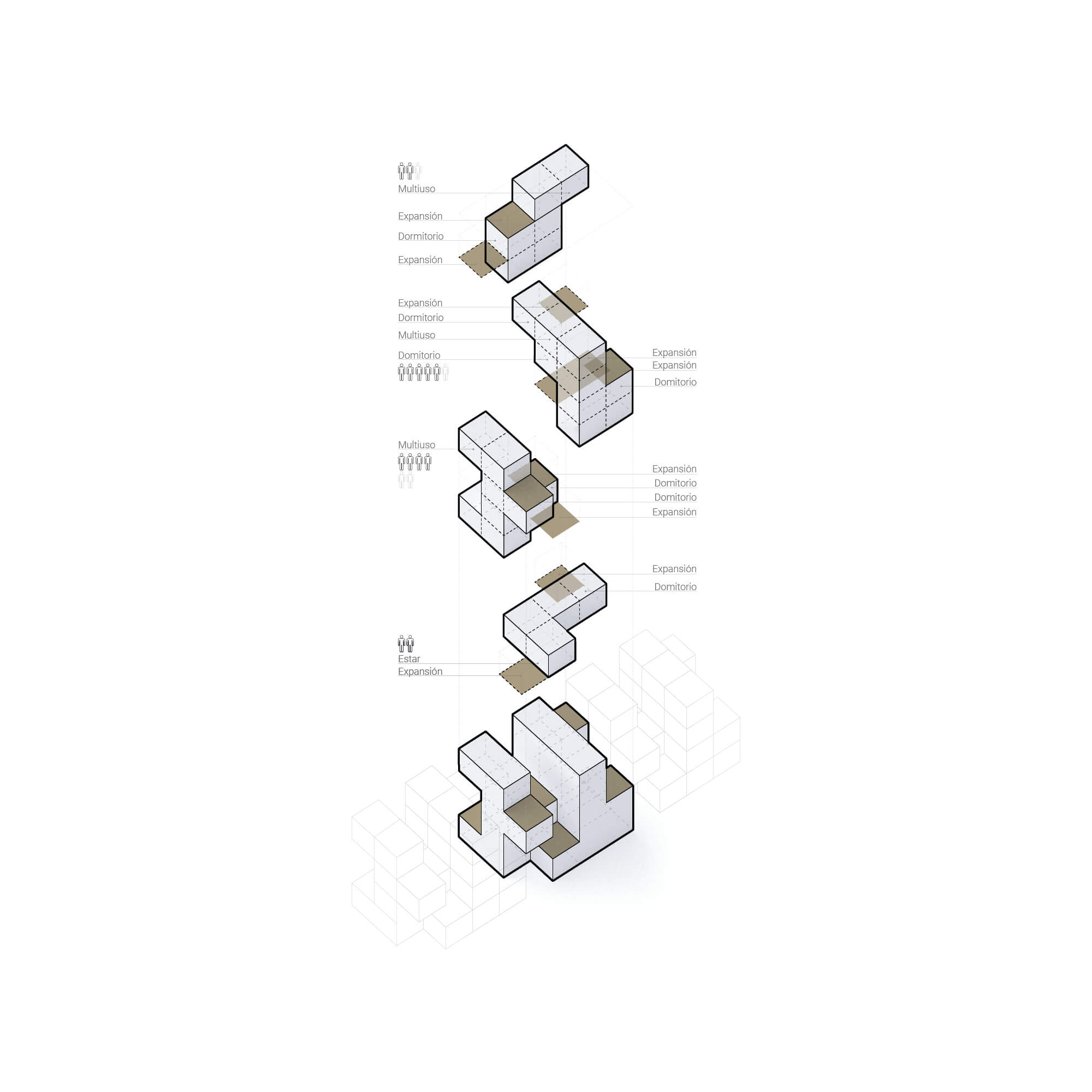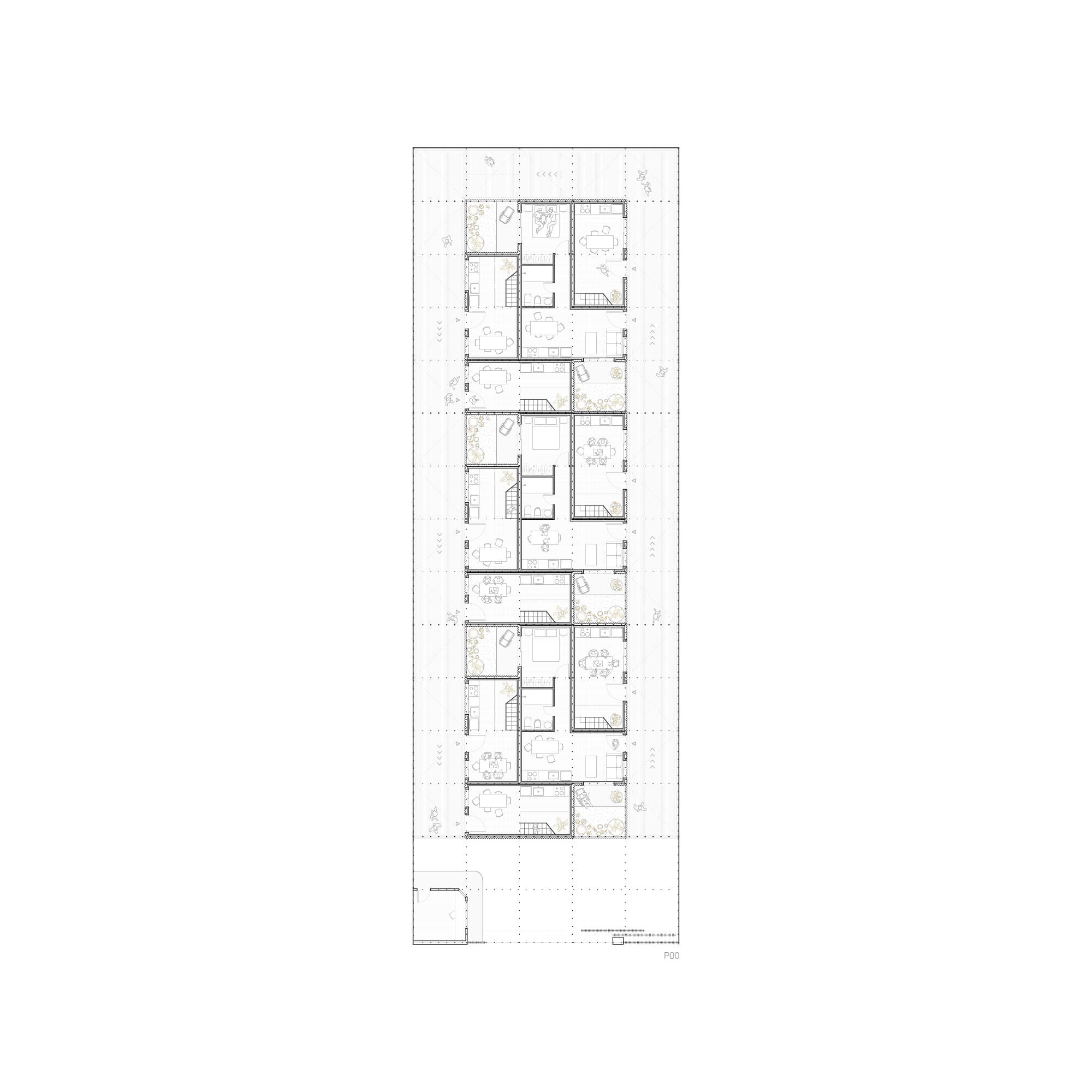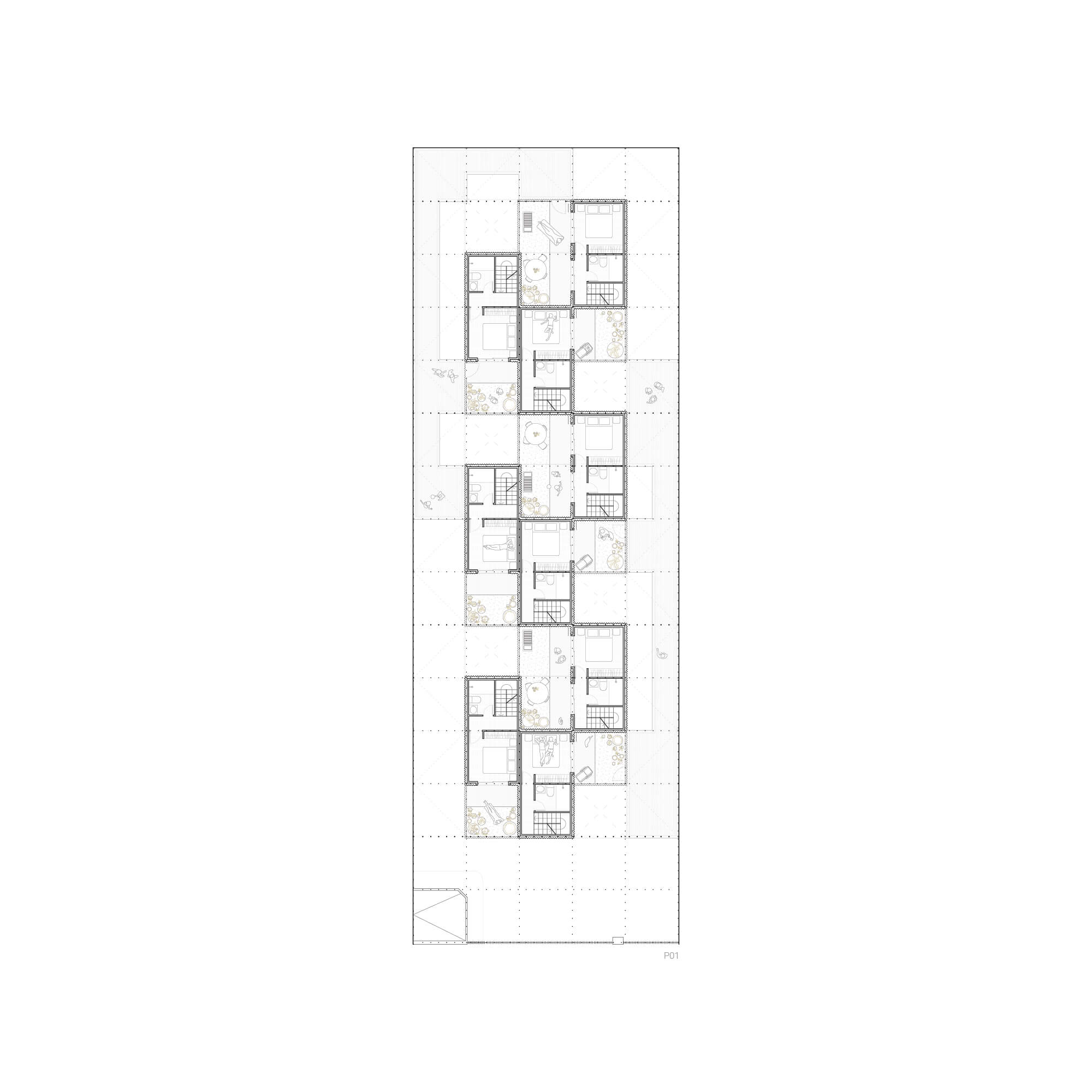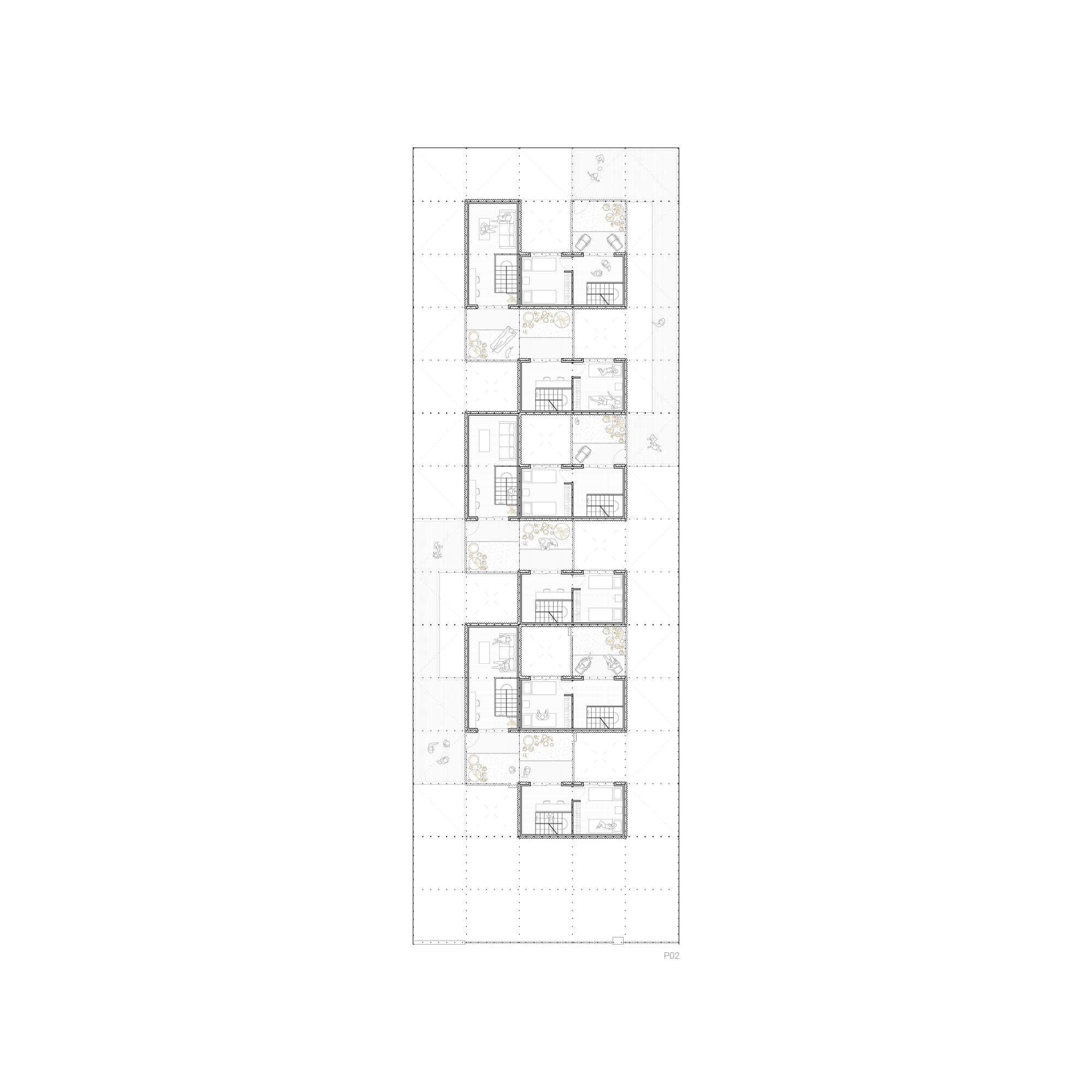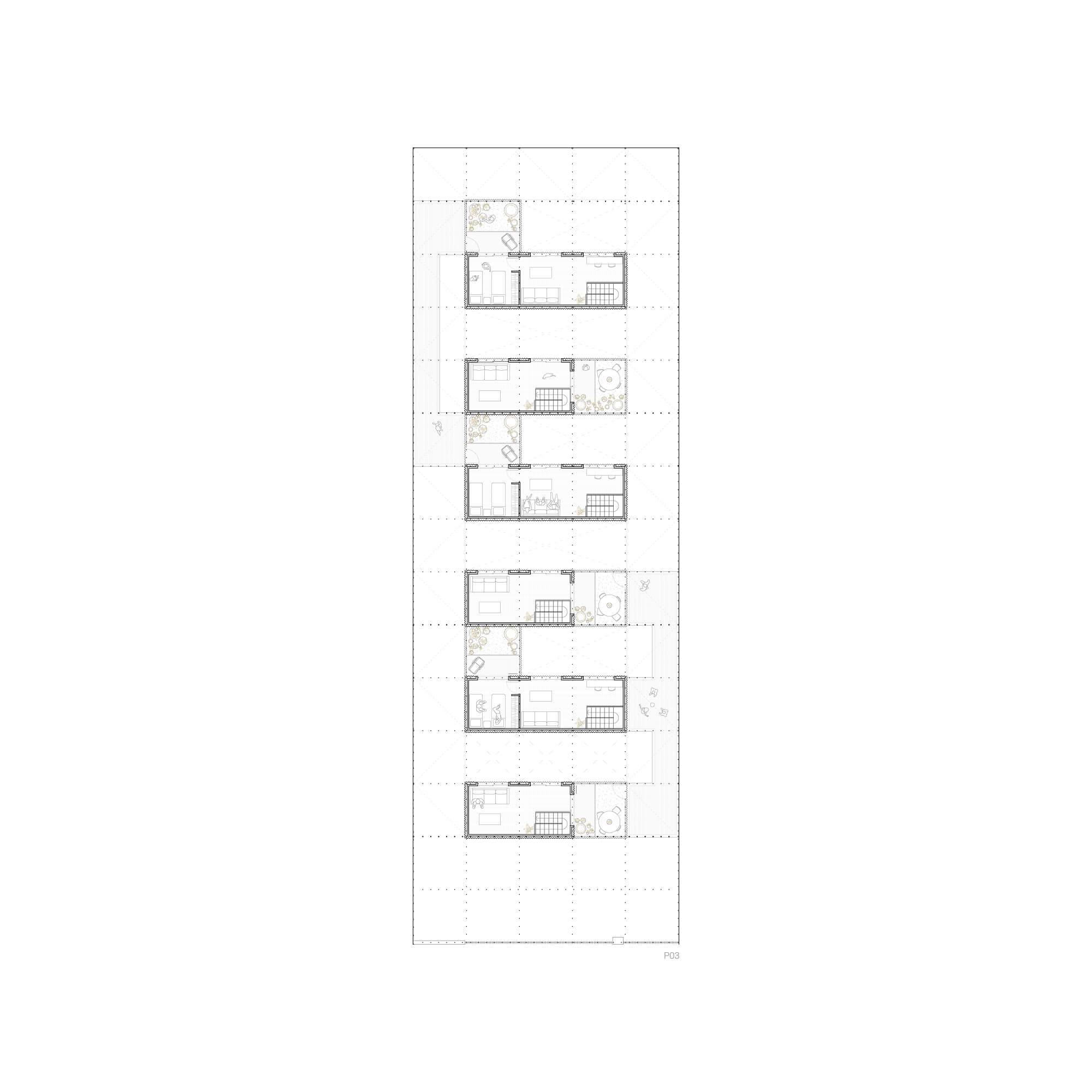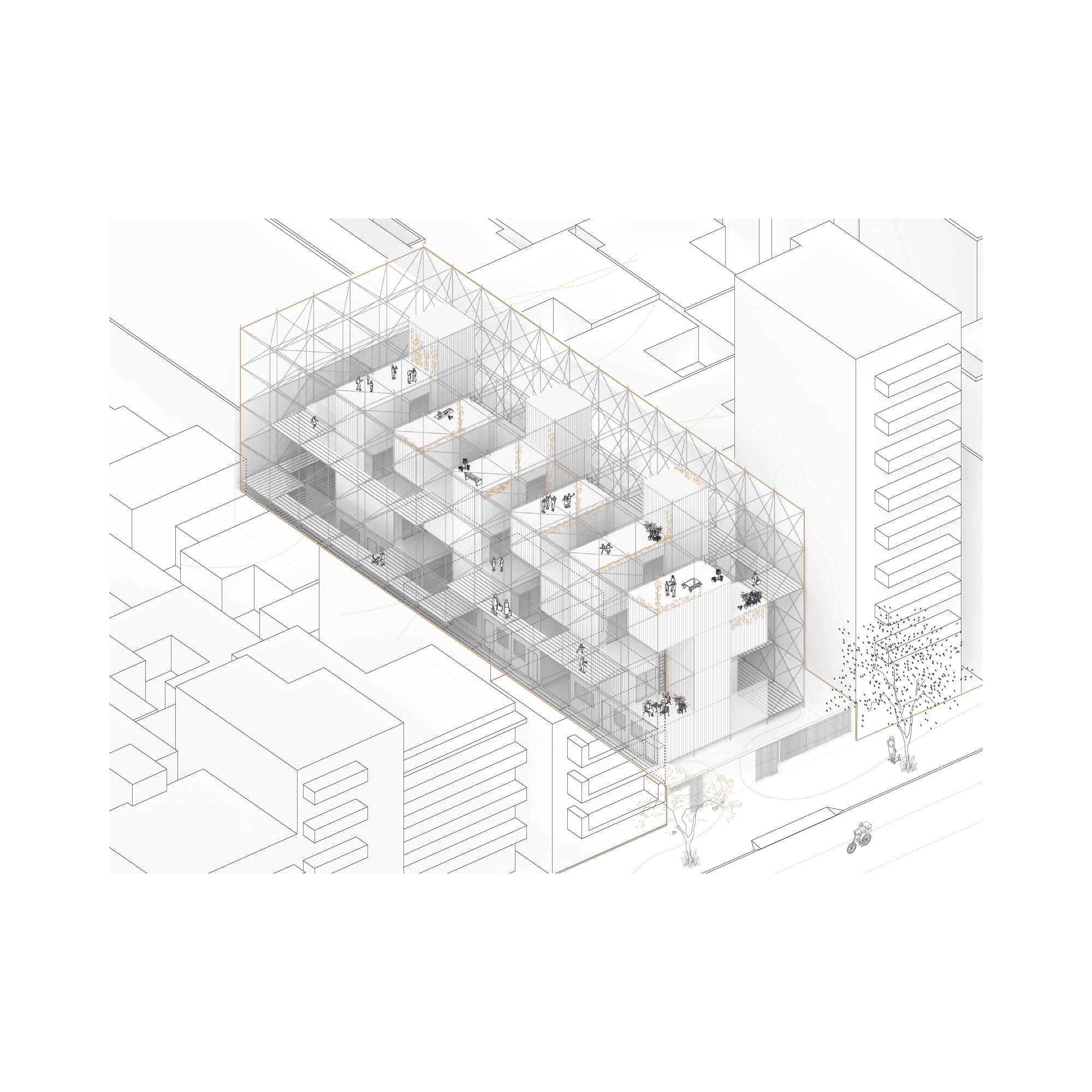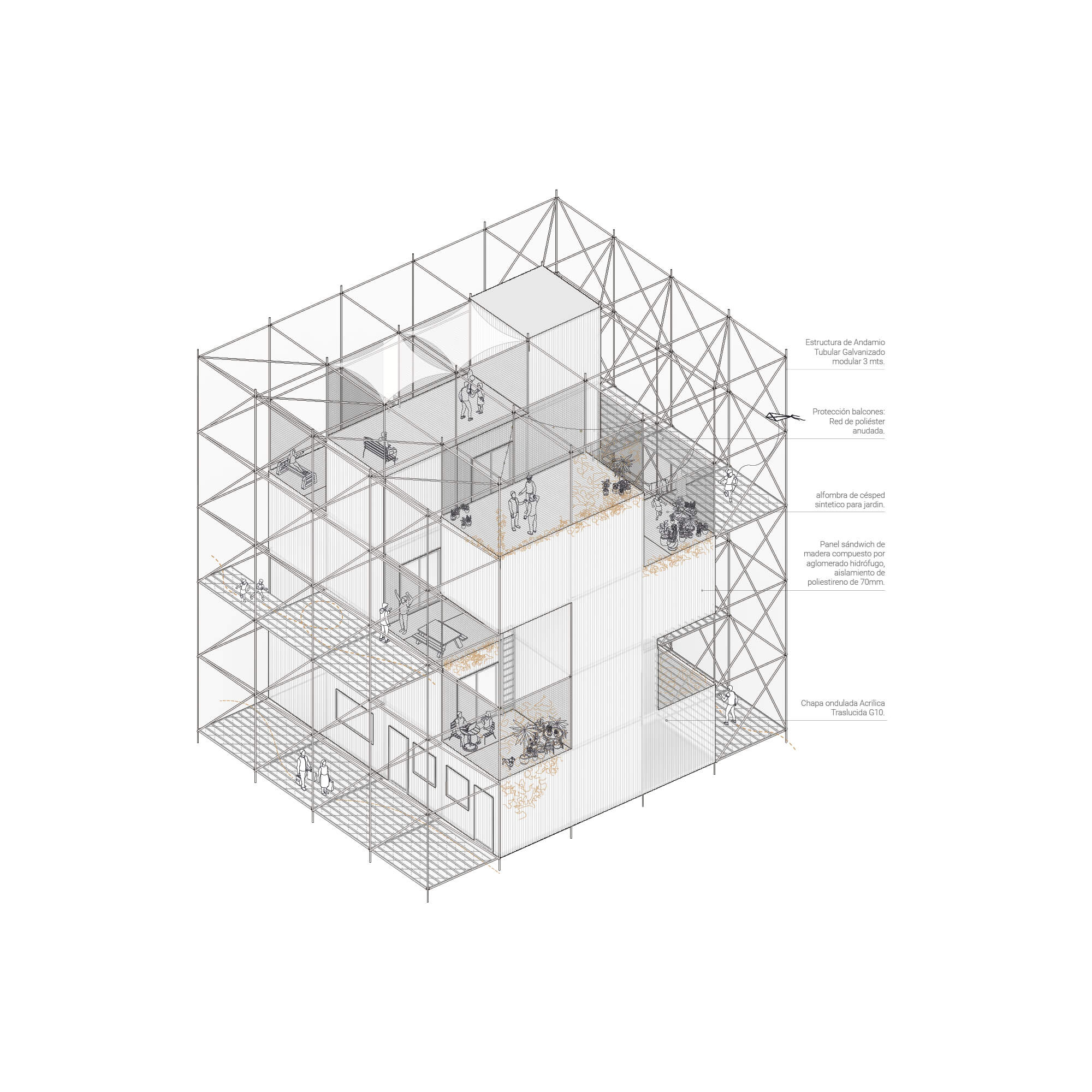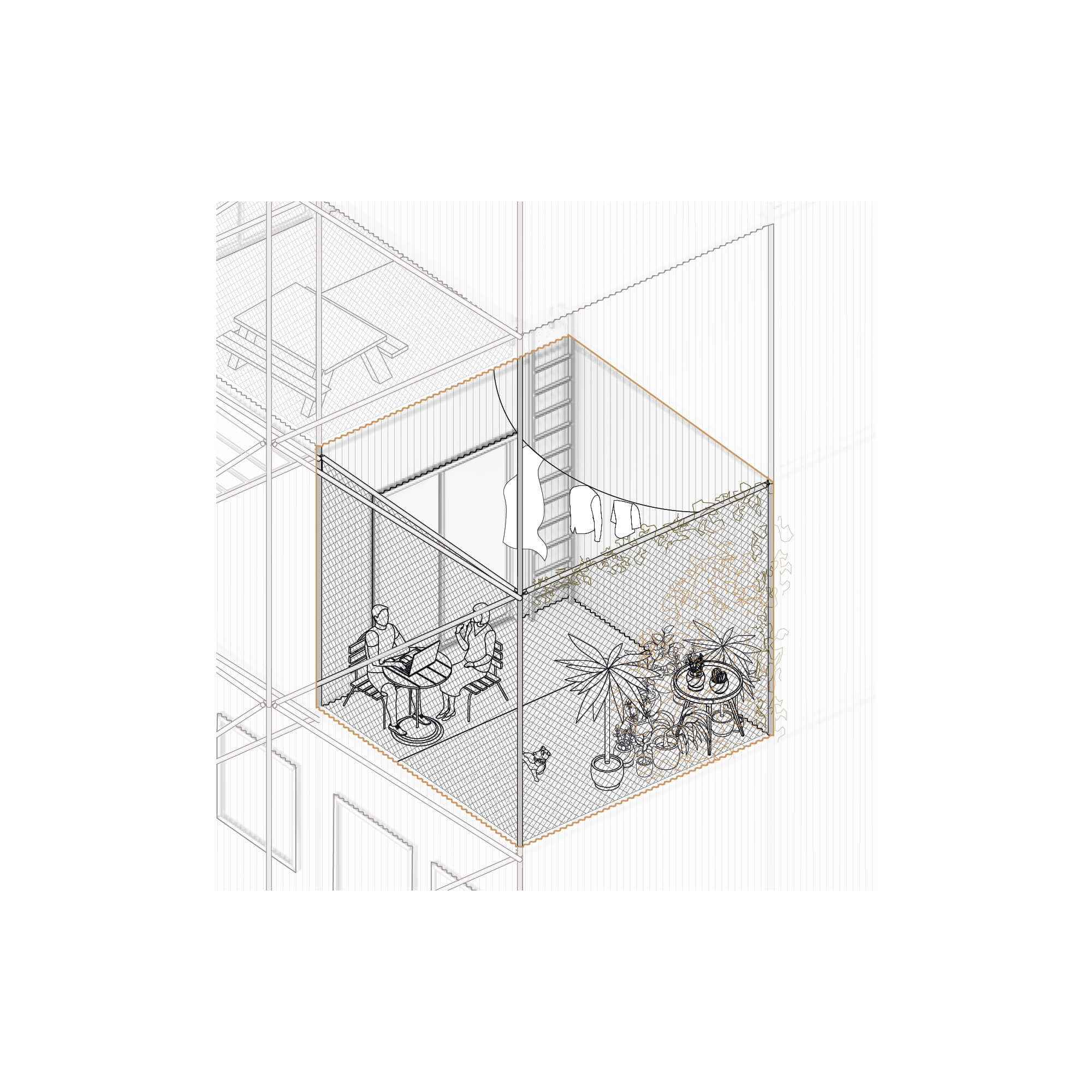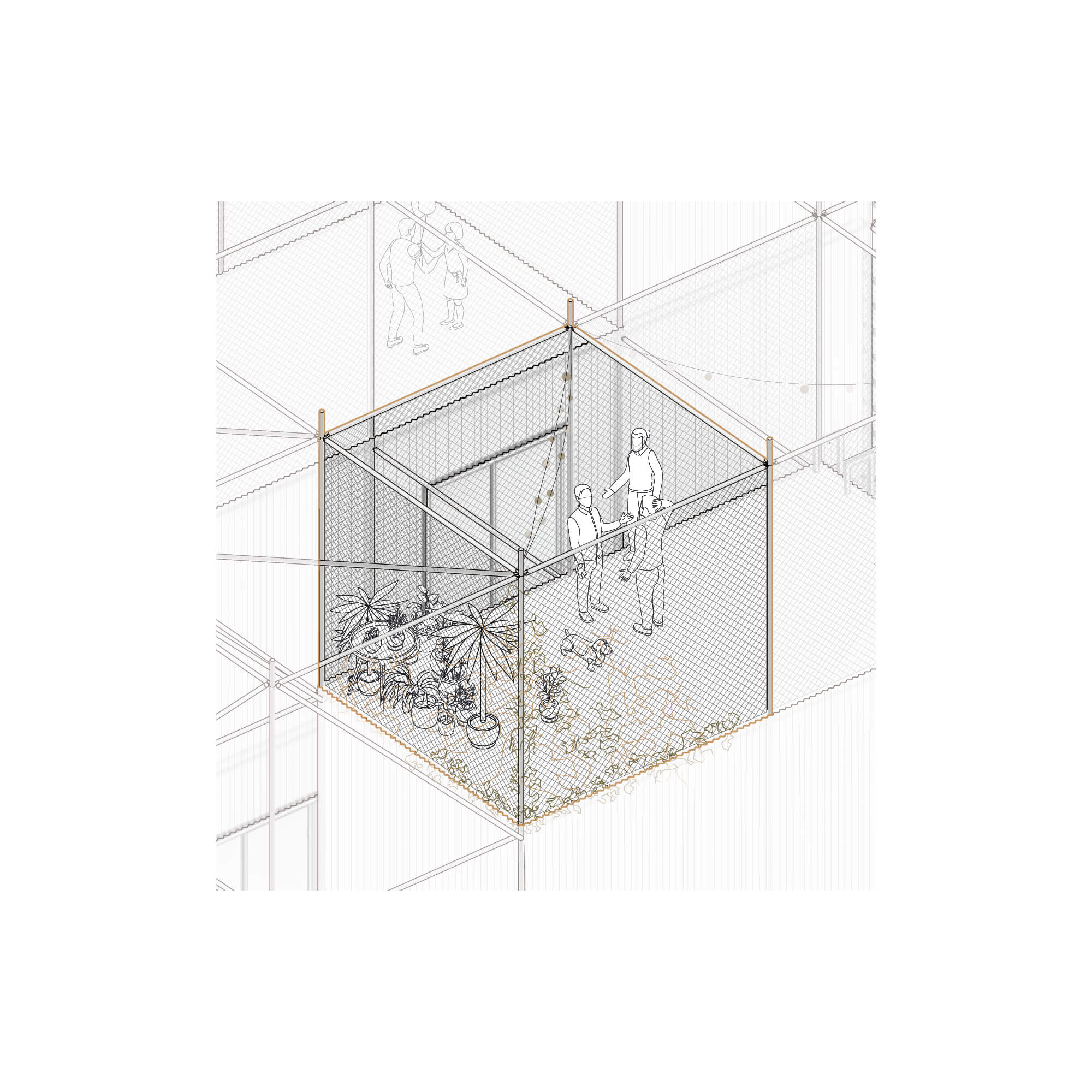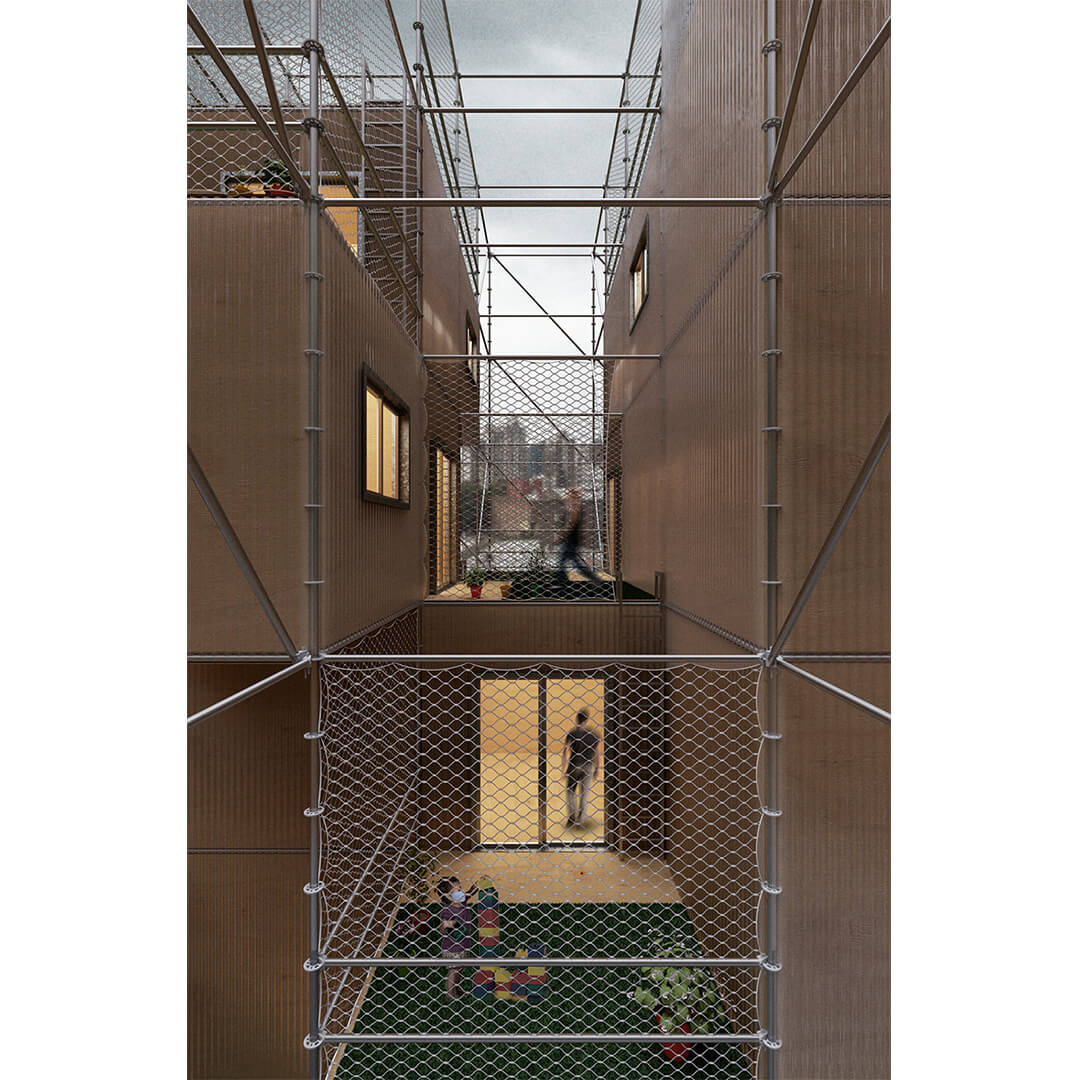Manuel Cucurell+Bruno Degiorgio+Tomas Fonturbel+Emanuel Mancini
Contrary to what we are used to thinking, moments of crisis are an extremely productive instance, as they allow us to let go of certainties and enter the realm of questions and reflections. The act of reflecting makes it possible to achieve a change in the way of looking, thus making it possible to search for new questions, new arguments, new meanings.
This “new normality” has imposed profound changes before our eyes, yet the most radical changes remain almost invisible. The streets remained desolate for many weeks and human life in all its complexity turned inwards. This process we are living through forces us to rethink the seemingly sturdy pillars on which our society is built. Both cities and the way in which we inhabit them and relate to each other have suffered a strong shock that has forced us to redefine everything. This proposal is founded on some reflections about themes proposed by this competition as well as shared personal experiences.
These are:
- What use can we make today of the large spaces emptied of activities such as schools, gymnasiums, temporary car parks in the city centre, etc.
- How the experience of urban life has moved from the street, the pavement and the park to windows, balconies, terraces and patios.
- How, with technology in between, our houses fluctuate between office, school, gymnasium, football pitch, dwelling, backdrop for our extra-home relationships and so many other configurations.
- How new detail-oriented and punctilious rituals have been generated for tasks as simple as coming home from shopping for everyday supplies.
- Understanding sustainability as the common sense that can be found in the strategies and knowledge of traditional architecture long before the term was coined; how to think about projects for ephemeral programmes that demand a large amount of resources and materials so that once this situation is over they can be reused for permanent programmes that always lack answers in reality, such as school canteens, health facilities, housing, etc.
- How to rethink the limits proposed by architecture so that they allow us to be distanced without the need to be far away.
In response to these questions, we propose to appropriate these large unused spaces by means of modular scaffolding systems, whose virtue is that they are adaptable and flexible to different environments and situations. This system does not aim to surprise with its originality, but rather to provide a quick and economical efficient response. To achieve the habitability of these structures, we use a palette of industrialised dry-assembly materials for subsequent reuse. Each of these materials responds in different ways when configuring limits to achieve spaces that provide containment, freedom and proximity without being exposed to contagion.
With regard to the configuration of the complex, the logic of joint vertical circulation is suppressed to give rise to dwellings that are accessed from the ground floor and are developed vertically. Access to each of these will be by means of a unidirectional circulation, the aim of which is to avoid crossroads and the permanence of the inhabitants of the complex. In counter-response to this need for physical distance but human proximity, perimeter walkways delimited by transparent vinyl skins are planned. These spaces are designed to accommodate outdoor activities such as physical exercise, children’s play or taking advantage of a sunny day. These boundaries can be removed as the situation gradually returns to normal.

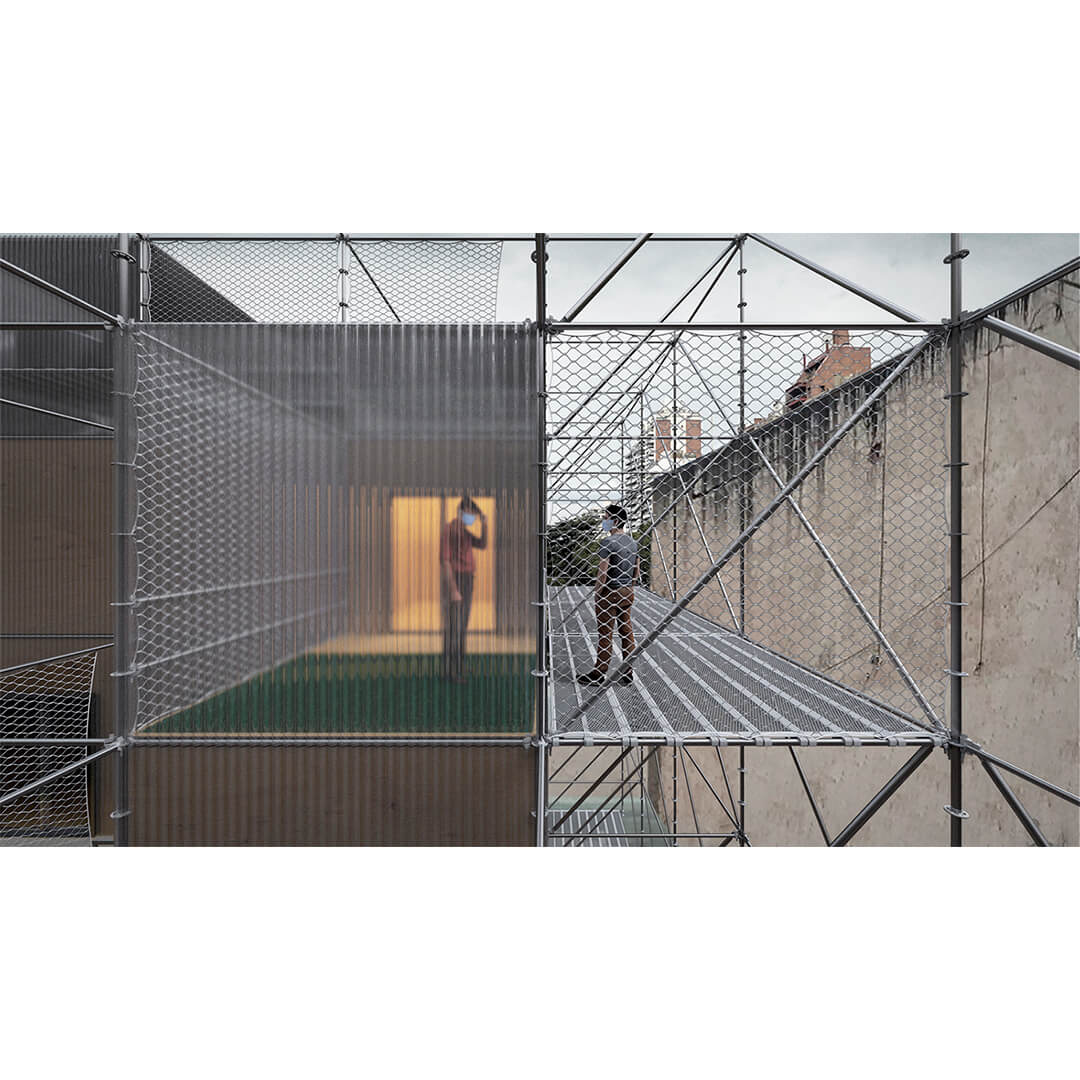
Finally, each dwelling is conceived from the obligation of having to provide an appropriate response so that the spaces can manage family interactions in accordance with this new Borgian Aleph where the world lives inside the dwelling.
Authors: Manuel Cucurell+Bruno Degiorgio+Tomas Fonturbel+Emanuel Mancini.
Location: Rosario, Argentina.
University: FAPYD UNR.
Year: 2020
Competition: Concurso Nacional de Ideas “Hábitats Emergentes”.
